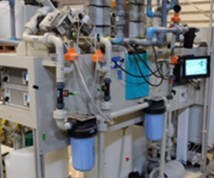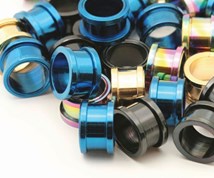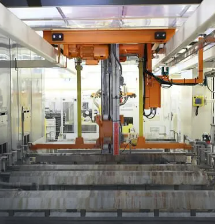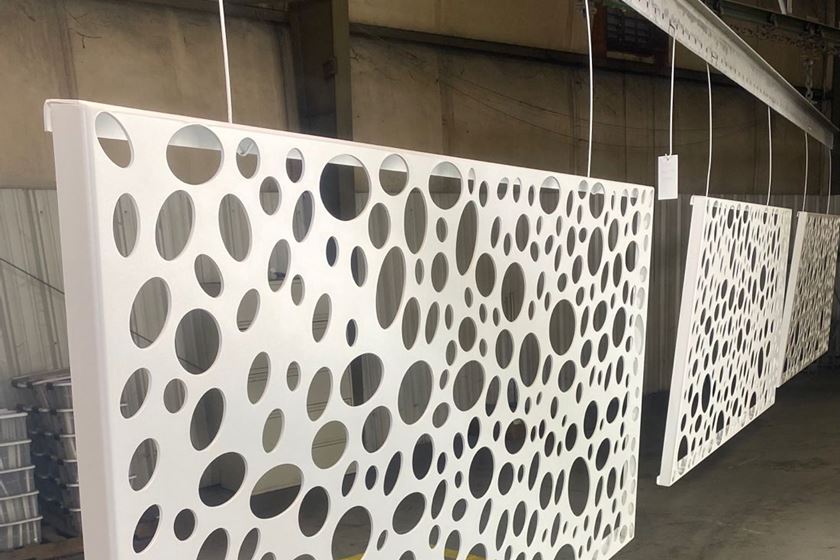Ecoat Over Welds
Why does the electrocoat material not cover the entire weld area?
Q. We manufacture steel assemblies for our customer. We weld the components using high-deposition rods, and the assemblies are then sent to a nearby coater that paints the assemblies with some type of electrocoat, which I believe is epoxy. The electrocoat material does not cover the entire weld area, and in some cases there are some pinholes. When I ask my supplier about it, they say this condition is normal. Can you tell me why they consider this to be normal? Is there any solution? —A.V.
A. Electrocoating over welds can be a challenge. Conventional cleaners employed during the electrocoating process are designed to remove rust preservatives and organic soils, but they are not capable of removing the oxides deposits and silicon (Si) spots typically found in and around welding areas.
Featured Content
Welds require some type of mechanical abrasion/cleaning or an acid pickling stage incorporated in-line prior to electrocoating to remove the inorganic oxides and prepare the surface for phosphating and electrocoat.
The extreme temperature necessary to produce the welding fusion creates a metal oxide layer on the weld and the surrounding areas of the substrates. This area is called the heat affected area (HAA) and is characterized by visually displaying dark smutted areas accompanied by discoloration, color variation, dulling or streaking.
The highly inorganic metal oxides are characterized by being chemically unreactive and electrically non-conductive with compositions varying with type of welding rod, welding temperature, surface quality and application environment. Oftentimes, the welding process takes place without pre-washing the substrates to remove working oils and lubricants prior to welding. Under high heat exposures during the welding process, these oils and lubricants are burned on to the surface of the substrate and leave behind highly oxidized organic and inorganic residues all around the heat-affected areas.
Weld spatter, the small metal particles expelled during arc and gas welding, can also fuse and embed onto the substrate. If not removed, they can be difficult to electrocoat completely and later on become nucleation sites for corrosion blisters that can lead to early corrosion.
Also, the high heat exposure during the welding process allows any silicon present in the chemical structure of the steel to diffuse and harden on the weld surface, creating silicon spots characterized by a yellowish color and non-conductivity.
Heat generated during welding can also change the physical and chemical properties of the substrate surface and affect how the surface accepts cleaning, phosphating, and electrocoating as the high temperature can cause solidification and hardening of the substrate. When the surface is hardened, there is less metal porosity for the zinc phosphate pretreatment to provide additional physical and mechanical adhesion.
Without a clean, bare, conductive steel substrate present in welded areas, there is no guarantee that phosphate deposition will be present or that a good phosphate coating will even occur.
Defects typically seen in or around welded areas include: large void areas showing bare substrate or sporadic electrocoat film; pinholes in the electrocoat film; and low electrocoat film thickness with a greenish olive look instead of the typical black electrocoat.
Analyses have shown three typical potential root causes for these welding defects: oxides present in the defect area (highly oxidized hydrocarbons adhering to the welded area); incrustations of weld splatter (anti-splatter materials present on and around the weld area); and silicon spots.
RELATED CONTENT
-
A Protective Decorative Electrolytic Coloring Process for Aluminum
The main task of this work was to study the influence of the different parameters on the electrolytic coloring process for aluminum.
-
An Introduction to Cyclic Corrosion Testing
A more realistic way to perform salt spray tests.
-
Coating Systems with the Best Long-Term Performance
The best protection against corrosion and UV exposure, says Axalta’s Mike Withers, is electrocoat and a super durable powder coating.



















